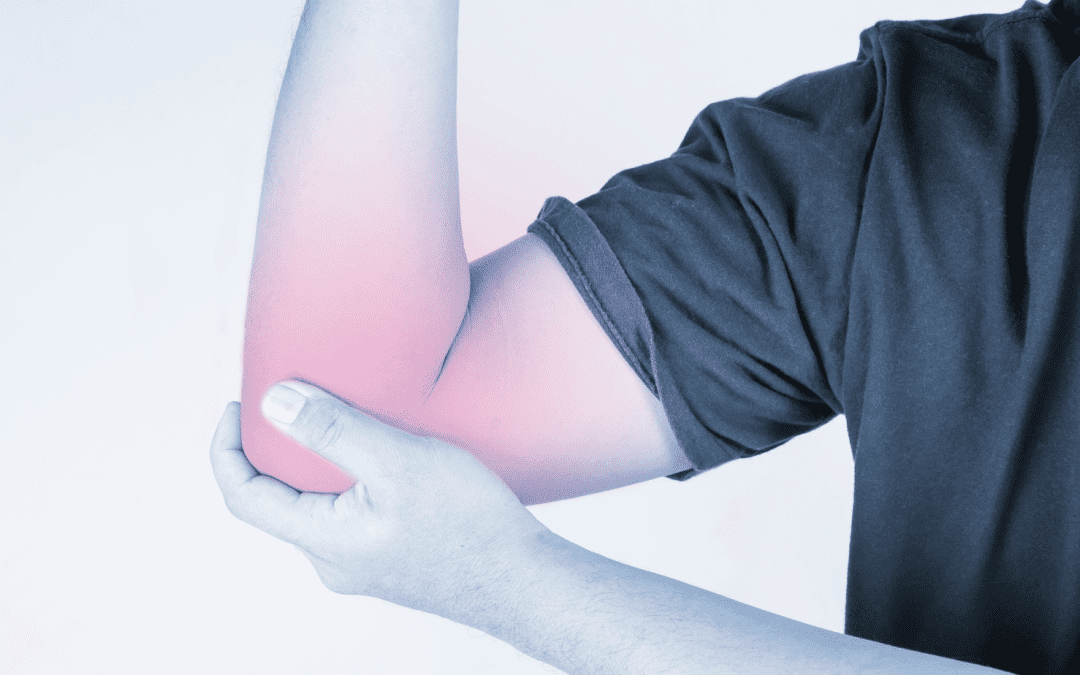What is Golfer’s Elbow?
Medically known as medial epicondylalgia or a flexor tendinopathy, Golfer’s elbow is a painful and irritable condition affecting the tendons that attach at the common flexor origin of the medial elbow (Kiel & Kaiser, 2023), primarily the tendons of the Flexor Carpi Radialis and Pronator Teres. Golfers elbow is commonly caused by recent and rapid changes in training load, technique, duties or equipment used during domestic activities, sport or work and these muscles are typically prone to injury with repetitive wrist flexion, gripping, and manual tasks.
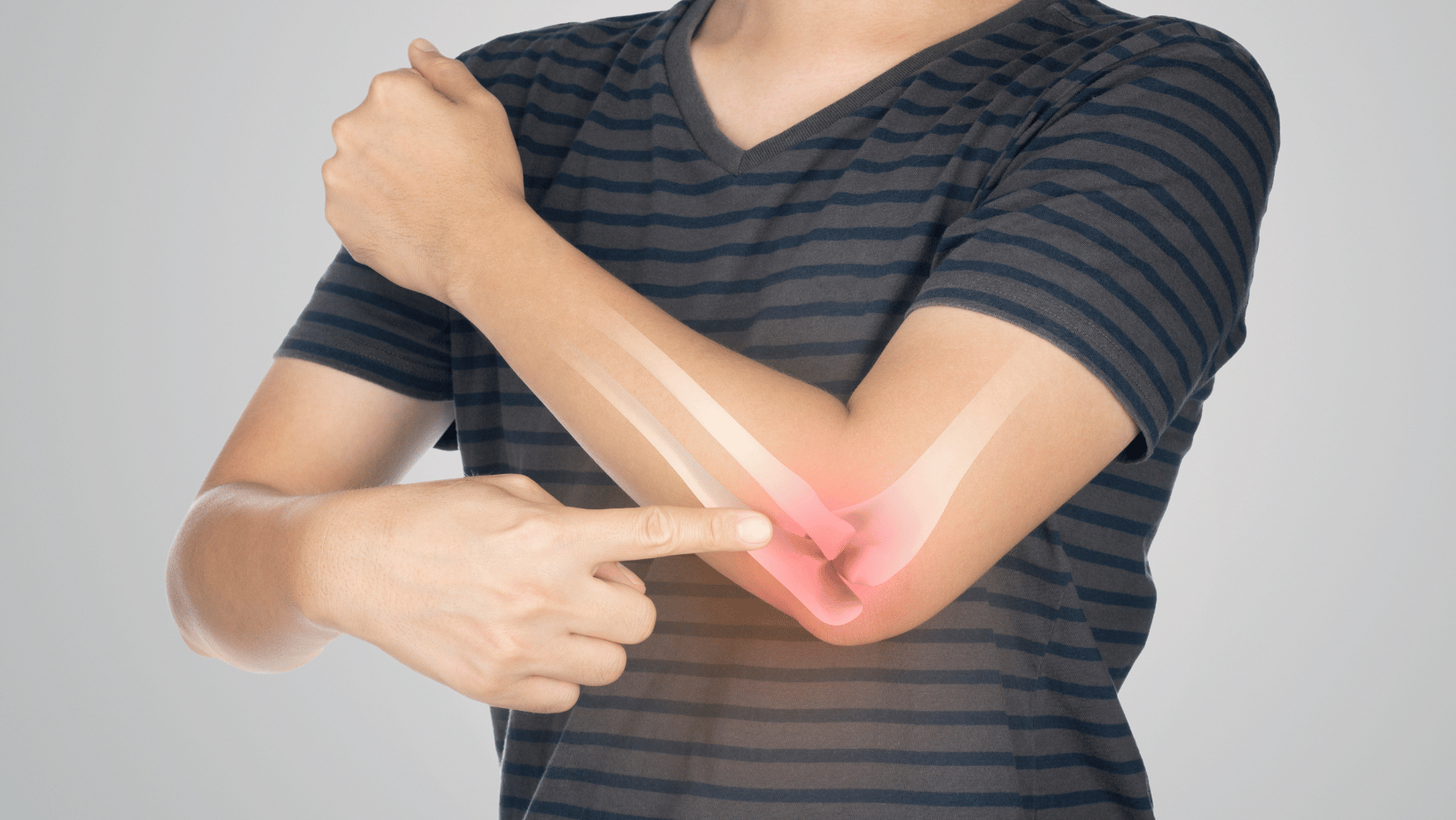
Risk Factors
- Repetitive tasks involving wrist flexion and gripping
- Inappropriate training load, over training and poor technique
- Altered biomechanics (scapular dyskinesis, altered posture)
- Decreased strength of flexor and extensor muscle group
- Poor fitting equipment (sport or work related)
- Golfer’s elbow is more common in women compared to men and peaks in prevalence between the ages of 45 and 64 (Kiel & Kaiser, 2023).
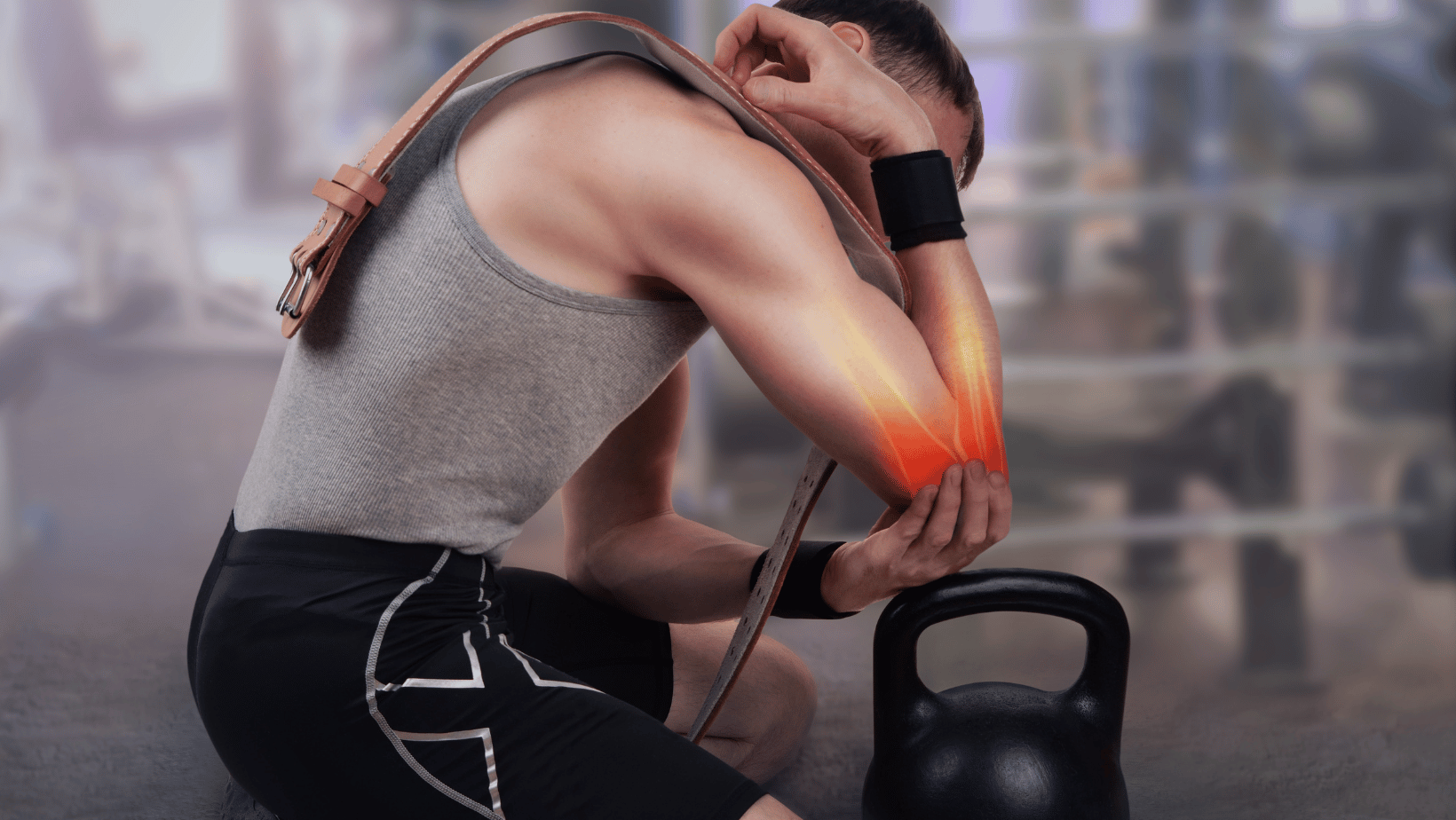
Causes
As mentioned, Golfer’s elbow typically comes about after rapid changes in load, technique, or a change in equipment used. This results in overuse of the muscles of the forearm, which are responsible for gripping, pronating the forearm, and flexing the wrist and fingers (Reece & Susmarski, 2023) which can lead to tendon collagen disruption. Despite the name, this condition doesn’t just affect golfers. Activities that can lead to golfer’s elbow include:
- Racket ball sports, like tennis, squash, pickleball and baseball. Inadequate techniques, or using a bat/racket that’s too heavy can overload the tendon.
- Sports that involve lots of throwing movements like baseball, javelin and cricket can also lead to golfer’s elbow.
- Repetitive movements and over gripping of tools. This often occurs in trades such as carpentry, painting, plumbing and general labourer’s.
- Weight training in the gym. Training errors can lead to a golfers elbow—poor periodization/technique and overtraining as well.

Diagnosis and examination
- Local pain & tenderness on palpation over pronator teres and flexor carpi radialis at the elbow, and around the medial epicondyle.
- Pain over the medial epicondyle with resisted isometric finger flexion, as well as flexion and pronation of the wrist.
- Reduced grip strength when compared to the unaffected limbis commonly found and this can be quantified by using a hand held dynamometer.
- An evaluation of the kinetic chain is also performed with a particular focus on examining the neck and thoracic spine, the shoulder and scapular kinematics. Variances of strength, movement and stability are noted. Overuse injuries in the elbow often occur secondary to shoulder or scapular dysfunction, and can also be linked to postural changes (Ellenbecker, 2013).
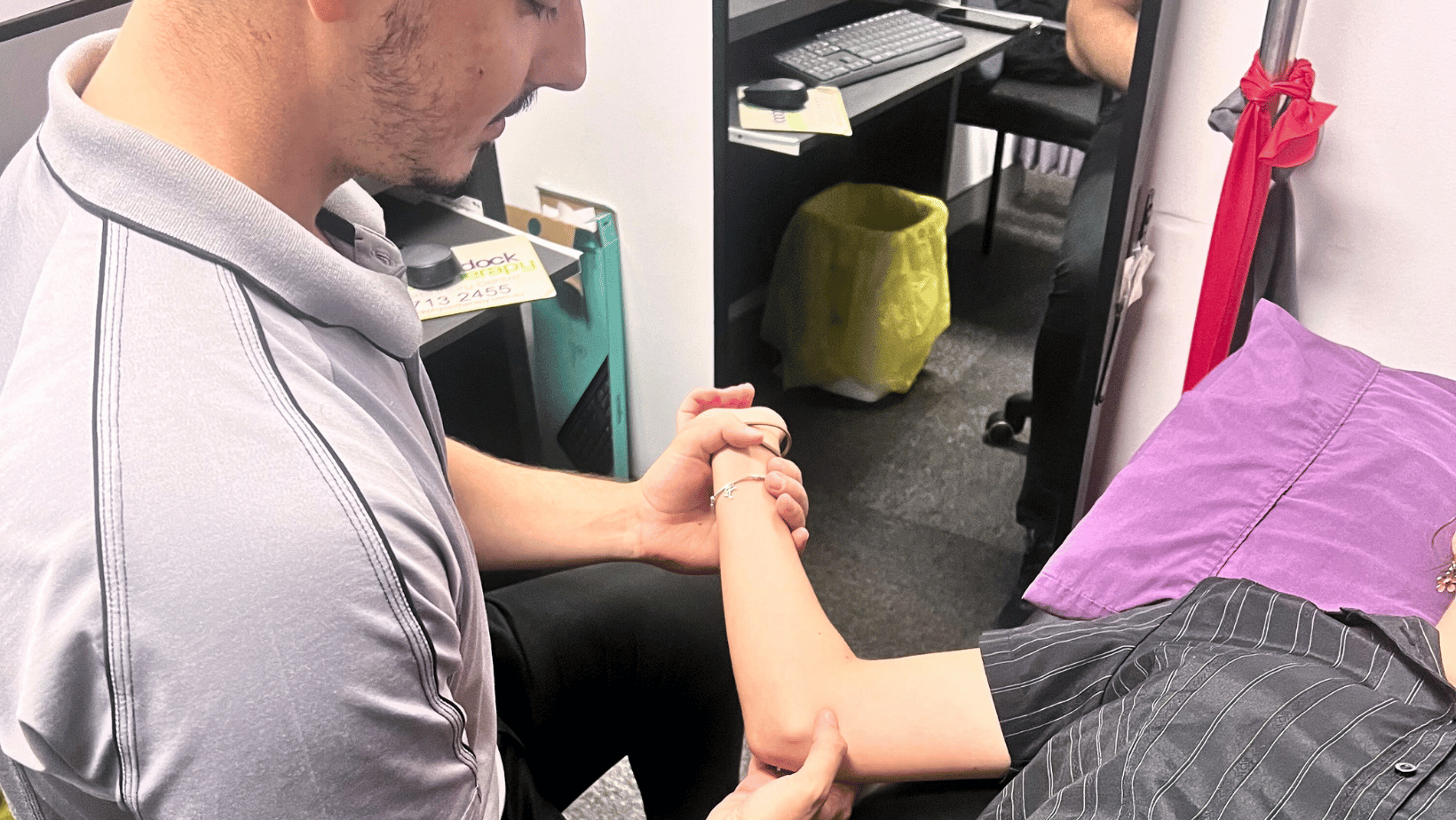
Treatment
Most cases of golfers elbow can be treated well with appropriate physiotherapy especially when identified and managed early (Keller, 2023). This includes careful assessment by the physiotherapist to determine which factors have contributed to the development of the condition, with subsequent correction of these factors.
Unfortunately, Flexor Tendinopathies don’t get better on their own. Although pain and discomfort may improve with rest and soft tissue work, it is not uncommon that as soon as the aggravating activity is recommenced or the load is increased, symptoms will return. Unfortunately complete rest will also decrease the ability of the tendon to tolerate load and the surrounding muscles may atrophy, ultimately slowing down the rehab process.
When developing a treatment plan in our clinic we consider each patients physical examination findings, their functional tasks and the lifestyle goals that they want to achieve whether it be certain work tasks, domestic ADL’s, gardening activities, lifting weights in the gym or their sporting/recreational activities. By understanding these goals we can personally tailor treatment to them.
The goals of initial Physiotherapy treatment are to modify load and aggravating activities, and control pain whilst still addressing the underlying biomechanics that may have caused the condition to arise. Our Physio’s will devise an individualized and graded strengthening program for the flexors and other forearm muscles, to improve tendon capacity. Exercise for golfers elbow is supported by evidence for long term benefit and prevention of re-occurrences (Kiel & Kaiser, 2023). General guidelines recommend a gradual increase in resistance and complexity of exercises, with no preference over concentric or eccentric programs (Coomes et al. 2015).
Education plays a large role in successful treatment of Golfers Elbow with the recommendation to modify any pain provoking activity and strong education is also given with regards to appropriate loading/unloading during rehab. Ergonomic advice should be given where relevant, in order to modify tasks that require repetitive and forceful movements and deviated wrist postures. Addressing grip strength, coordination deficits and associated cervico-thoracic, shoulder and scapular dysfunction should be targeted in treatment to enhance results (Brukner et al., 2017). The inclusion of addressing the cervico-thoracic region and scapula control is important as Vicenzino et al. 2010 found that unaddressed accompanied kinetic chain factors was one of the strongest contributors to persistent medial elbow symptoms. This multi-factorial approach during physio treatment helps patients achieve their goals and aids in prevention.
With appropriate management, most cases of golfers’ elbow that have not been present for long periods can usually recover within 6-8 weeks. In more severe and chronic cases, recovery can be a lengthy process and may take up to 6 -12 months. Early physiotherapy intervention is therefore vital to hasten recovery.
In cases of Golfers Elbow that do not improve with rehabilitation further investigation is warranted including X-rays, ultrasound or MRI’s as well as potential referrals to an Orthopedic or Sports Physician. Cortisone injections and braces may be considered but are typically an adjunct to physiotherapy and not used instead of treatment. When using bracing as a treatment technique, Erickson et al. (2015) reported that bracing alone was no better than physical therapy in treating golfers elbow over the long term (>26 weeks). Although providing short term relief, corticosteroid injections were associated with higher re-occurrence rates of symptoms and significantly poorer outcomes, beyond 6 weeks (Bisset et al. 2006). Thus it is important that we address the underlying dysfunction causing symptoms, and that is what physiotherapy aims to do.
Exercise to help Golfers Elbow
Wrist Flexor Strengthening
Aim: Strengthen Wrist Flexors
How: With a small weight in hand, your arm supinated and your elbow bent at a right angle supported by a table, simply flex your wrist lifting the weight all the way through movement to strengthen up your wrist flexors. Repeat for reps.
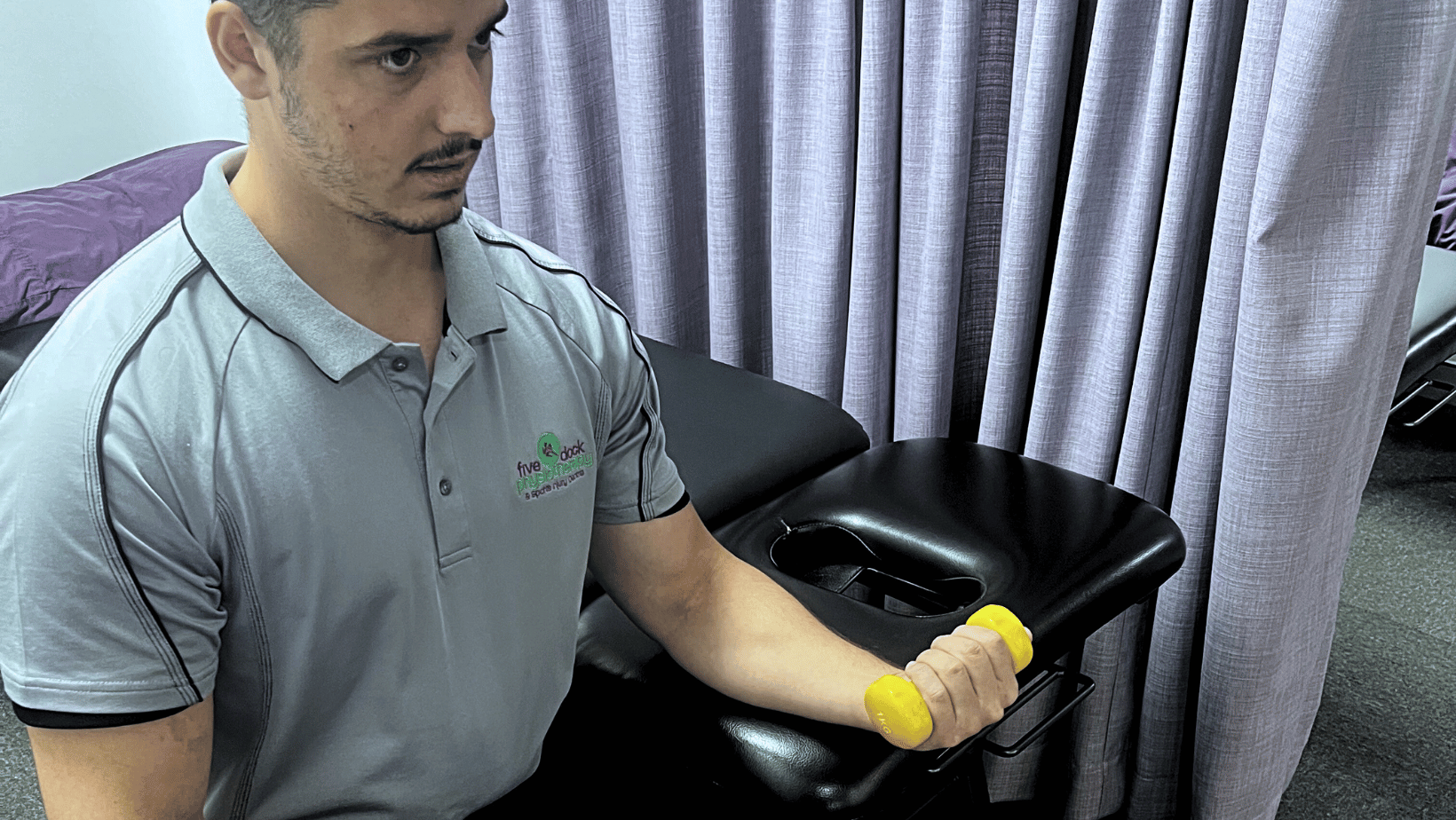
Grip Strength
Aim: To improve grip strength, training the finger flexors
How: Hold a stress ball in your hand. Simply squeeze the ball and hold for 5 seconds. Repeat for reps.
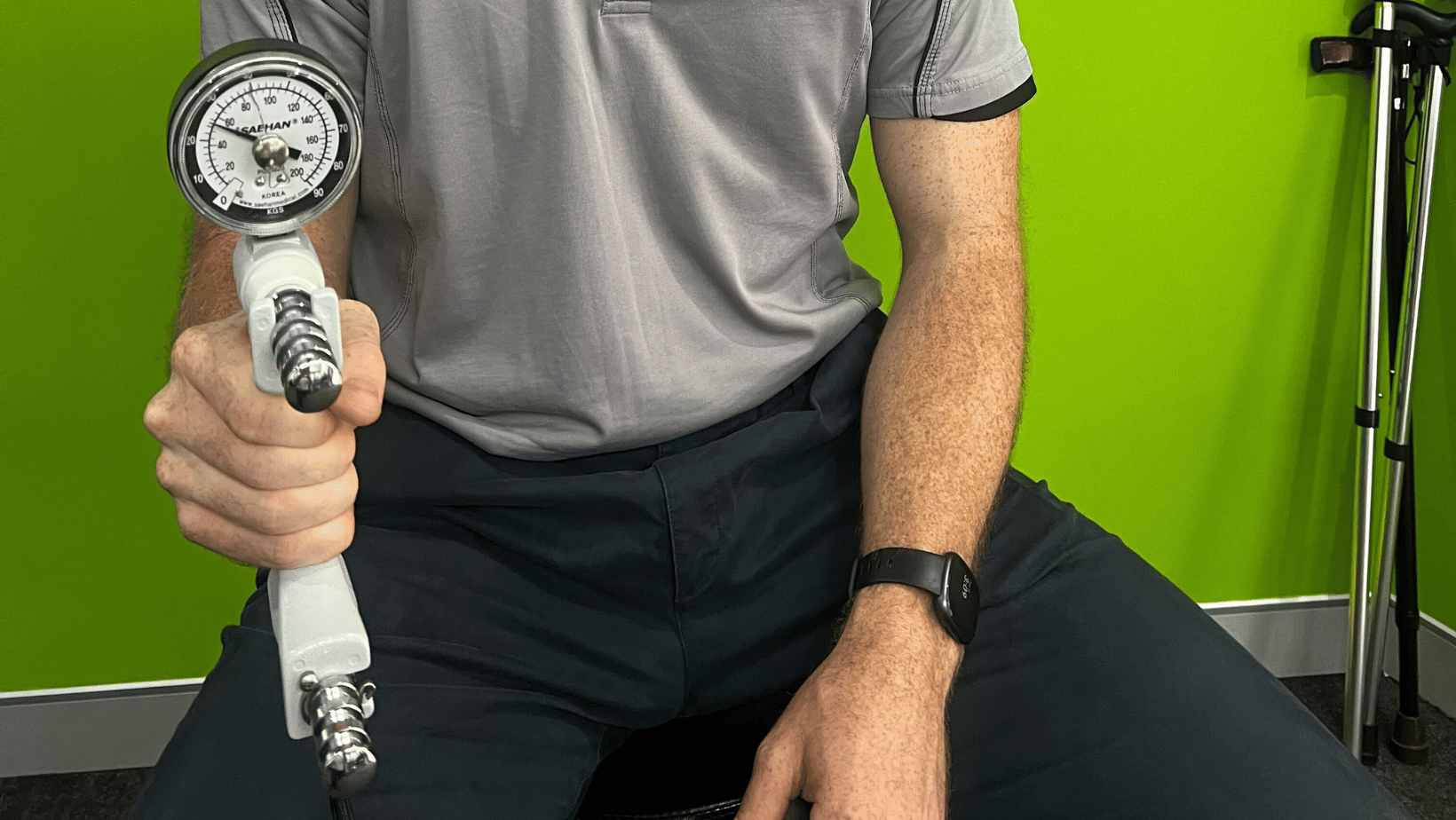
Reformer Internal Rotation
Aim: Improve rotator cuff (shoulder) strength using the reformer. If internal rotators are weak, we typically overuse our wrist flexors lead to golfers elbow.
How: In high kneeling with your core engaged and shoulders retracted while facing sideways, hold the strap with elbow bent to 90 degrees. Simply pivot from the elbow, pulling the strap inwards targeting the internal rotators. Vary spring resistance to change level of difficulty

If you or someone you care for has an injury, a flare up, requires some rehabilitation or experiences an increase in pain, give the clinic a call on 9713 2455 or book online.

